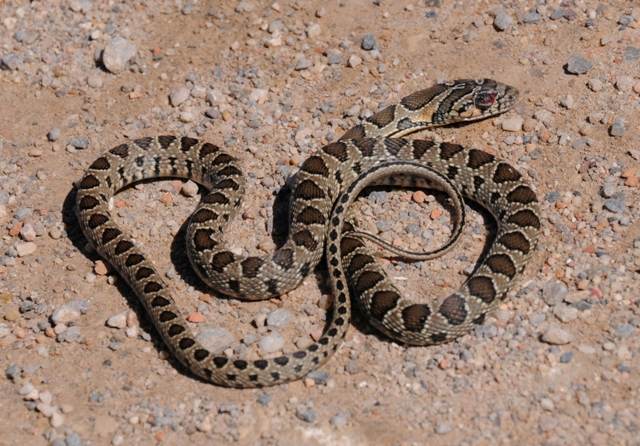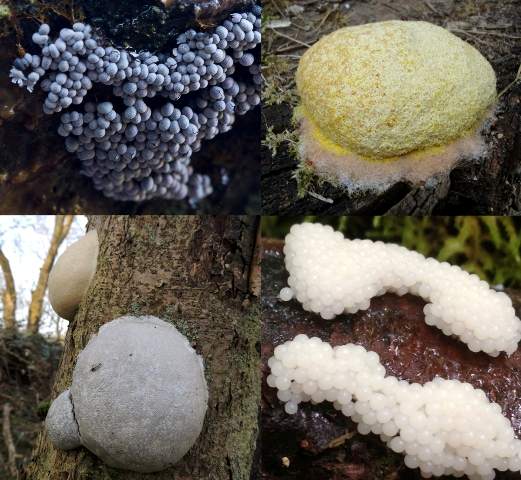What is this Life? Sue Parker investigates a group of organisms that continue to tax taxonomists
Based on an article by Sue Parker in Algarve Resident, November 2017. Algarve Resident is the leading English-language newspaper and the source of essential information for Residents and would-be Residents in the Algarve.
For more information about Algarve Resident...
Slippery characters – obsequious sycophants who grovel and fawn – often have a treacherous and altogether more venomous side, manipulatively twisting everything you say to their advantage. Beware ‘snakes in the grass’, who speak with forked tongues. Slimeballs!
But snakes, which are neither slimy nor greasy, wear their dry skins rather as we do clothes. By shedding (sloughing) a dull and worn-out skin, a snake regains a youthful brilliance belying its calendar years. For most of us the ability periodically to change from ghastly to glorious, rather than suffer the remorseless decrepitating decline that is the destiny of mammals, is probably the only enviable aspect of a snake’s life.

This beautiful Horseshoe Whip Snake has no need to fear ageing: it sheds the years each time it sloughs a skin. Picture: Ray Tipper
Nature does have its slimier sections, of course, with slugs and snails among the more obvious members, and they move with characteristic sluggishness. Slime and speed seem to be incompatible, and a group of organisms known as slime moulds in no way bucks this trend.
Slime mould is the common name given to a diverse group of single-cell amoebae that are able to live independently but, at some stage in their lives, decide to get together to form some of the most remarkable, and in many instances beautiful, structures for the sole purpose of reproduction. What initially spurs these free spirits to give up their independence is not some primeval mating urge but the threat of starvation; they run in to one another if food becomes scarce. It is when they coalesce that some (not all) of these organisms appear as jelly-like slimes, and if their ghastly appearance and texture doesn’t give you the creeps then something else will: they really do creep, slowly and en masse, munching away at anything edible that they come into contact with.

To raise their potential offspring onto pedestals, these cellular slime moulds have changed from ghastly to glorious. Clockwise from top left: Arcyria cinerea prior to spore development, Arcyria cinerea with spore mass, Arcyria denudata, and Physarum leucophaeum. Pictures: David Kelly.
Another surprising capability of slime moulds is unparalleled healing capacity. Separate a slime mould blob (a plasmodium, as it is called) into two or more parts and the cells are able to find their way back together, reunite and carry on foraging.
Amazing capability number three of these primitive organisms is an unerring sense of direction: they creep towards fresh sources of food, such as plant matter, bacteria and fungi. It is just as though they had noses: slime moulds detect the presence of a chemical odour in the air and move towards its source. If the food supply runs out altogether, this triggers the slime mould plasmodium into a grand finale that would bring the house down… if only there were an audience. It all happens so slowly that few people ever get to see this supreme shape-shifting display.
Slime moulds reproduce by means of spores that are similar to those of fungi – in fact it is for this reason that for a long time slime moulds were considered to be fungi. In one common group of slime moulds, some of the individual cells within the mobile agglomeration form a foot and stick firmly to the piece of wood or whatever they are living on; other sacrificial amoebae then shape themselves into stems upon which to raise spores; and the chosen few million turn themselves into clusters of spores, known as sporangia. When the wind blows, spores from the sporangia are dispersed to new locations, where they germinate as microscopic amoebae. The whole amazing process can now start all over again.

So very different in appearance, these organisms have little in common except for the common name slime mould. Clockwise from top left: Badhamia utricularis (much smaller than grapes and quite unsuitable for wine making!), Fuligo septica which delights in the common name Dog Vomit Slime Mould, Stemonitis splendens, and Enteridium lycoperdon (not the result of a hastily sliced drive at the eighteenth).
Not all slime moulds fit the mould, so to speak; in fact the 1000 or so species currently recorded have been fitted, not always comfortably, in to several of the taxonomic slots in our arbitrary categories of Life on Earth. Some slime moulds never see the light of day, living as parasites within plants; you can blame them for the ravages of cabbage club root or the powdery scab disease that wrecks your potatoes’ prospect of ‘best in show’ at the local gardening club. Another group comprises organisms so small that they can make a meal of a single fungus spore, and when it comes their turn to reproduce their brood consists of just one or two slime mould spores… but they are not alone: billions of these mobile amoebae may share the same tiny toadstool or fallen flower petal. Categorising the various kinds of slime moulds is something that scientists are still pondering.
What any of us can do is look out for these amazing creatures, or rather for vast swarms of them making up visible sporangia. Most slime moulds need moisture all the time, but some are able to grow a hard skin during hot dry weather, shedding it when the air is moist so that they can continue to hunt for food to convert into feet, stems and yet more slime mould spores. Amazing, or what?
Sue Parker is author of Wild Orchids of the Algarve, how when and where to find them.
Back to articles...

